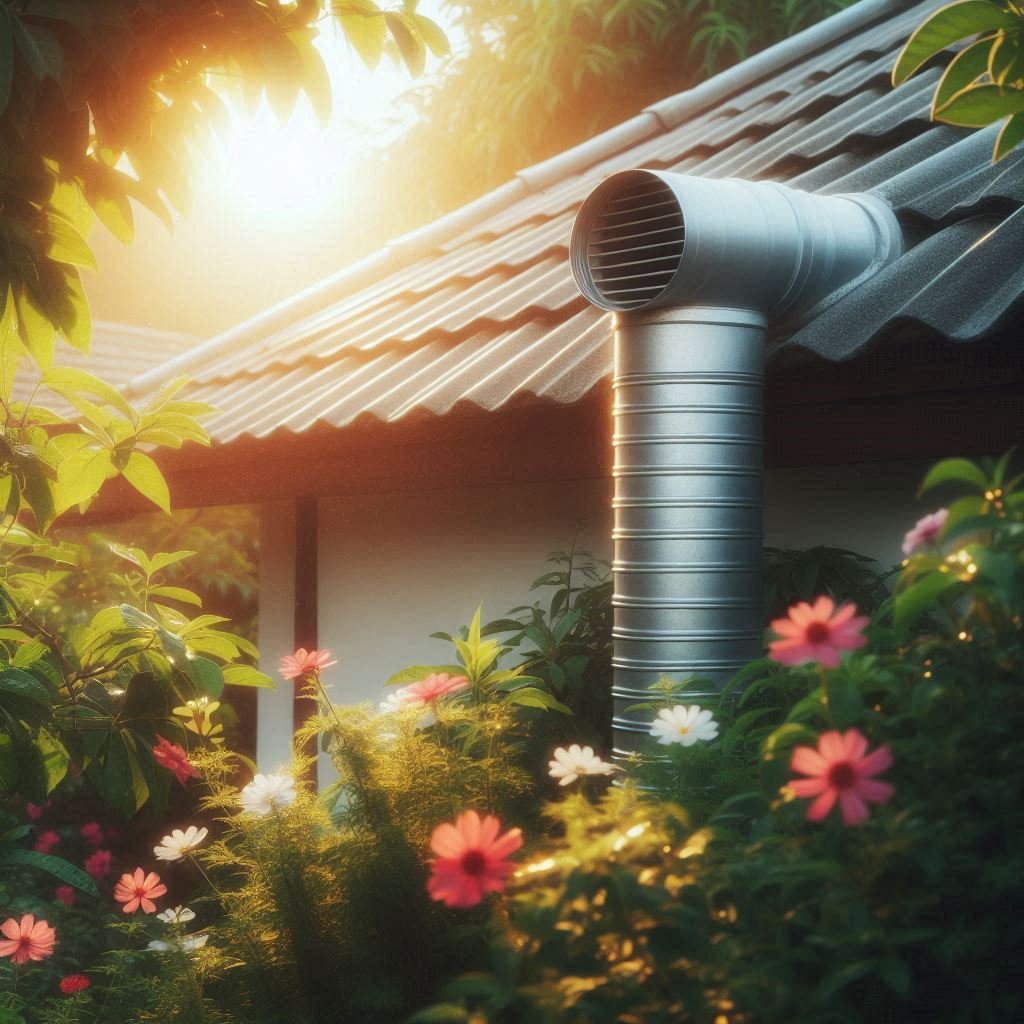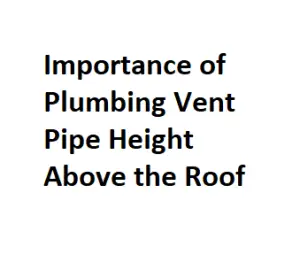The Purpose of Plumbing Vent Pipes:
These pipes serve a vital function in the plumbing system by allowing air to enter the drain pipes. As wastewater flows down the drains, the vent pipes ensure that air can replace the displaced water, preventing the formation of a vacuum that could impede the drainage process. In simpler terms, vent pipes help maintain proper water flow and prevent unpleasant odors from entering your living space.
Importance of Height Above the Roof:
Meeting Code Requirements:
Building codes dictate the minimum height requirements for plumbing vent pipes above the roof. These codes are in place to ensure the safety and health of occupants by preventing the release of sewer gases into living spaces. Typically, the minimum height requirement ranges from 6 inches to 12 inches above the roof surface, depending on local regulations.
Preventing Obstructions:
Aside from meeting code requirements, the height of plumbing vent pipes above the roof also helps prevent obstructions. Snow, leaves, and other debris can accumulate on roofs, potentially obstructing vent pipes if they are not adequately elevated. By maintaining the recommended height, you reduce the risk of blockages that could compromise your plumbing system.
Maintaining Proper Ventilation:
Proper ventilation is crucial for a well-functioning plumbing system. Inadequate venting can lead to slow drainage, gurgling sounds, and even sewer gas leaks. Properly positioning plumbing vent pipes above the roof ensures essential air circulation, preventing issues and promoting optimal performance.
Additional Considerations for Plumbing Vent Pipes:
- Vent Pipe Material: The material used for vent pipes can also impact their performance. Common materials include PVC, ABS, and cast iron. Each material has its advantages and limitations, so it’s important to choose the one that complies with local building codes and suits your specific plumbing requirements.
- Weather Protection: The height of plumbing vent pipes should consider weather conditions prevalent in your region. For instance, in areas prone to heavy snowfall, it may be necessary to extend the vent pipes higher to prevent blockages caused by snow accumulation. Proper insulation around the vent pipes can also help prevent freezing in colder climates.
- Proximity to Windows and Openings: Building codes often specify the minimum distance that plumbing vent pipes should be from windows, doors, and other openings. This is to ensure that any odors released from the pipes do not enter the living spaces. Adhering to these guidelines helps maintain a healthy and comfortable indoor environment.
- Regular Inspection and Maintenance: To guarantee the continued effectiveness of plumbing vent pipes, regular inspection and maintenance are essential. Inspect the pipes for any signs of damage, corrosion, or blockages. Clear away debris, leaves, or snow around the vent pipes to prevent obstructions. Any issues should be promptly addressed to avoid potential problems with your plumbing system.
- Professional Installation: While some homeowners may attempt DIY plumbing projects, it is highly recommended to hire a licensed plumbing professional for the installation and maintenance of vent pipes. Professionals are familiar with local building codes and can ensure that the plumbing system meets all safety and regulatory standards.
- Addressing Venting Problems: If you notice signs of venting problems such as slow drainage, gurgling sounds, or foul odors, it’s crucial to address these issues promptly. Ignoring venting problems can lead to more significant issues with your plumbing system, potentially resulting in costly repairs. Consult with a qualified plumber to diagnose and resolve any venting issues.


